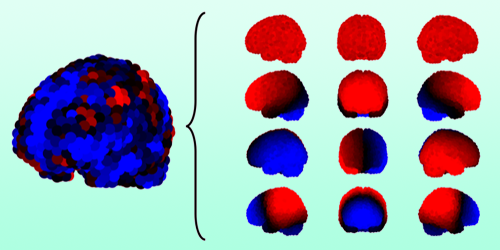Assessing the Brain at a Range of Frequencies
The critical brain hypothesis states that the brain operates at the boundary between ordered and disordered dynamical regimes. Neuroscientists believe that being close to the edge of instability is likely to enhance the brain’s capacity for information processing, storage, and transmission. Many efforts to validate this hypothesis have focused on time-averaged statistical properties of neuron firing rates. Rubén Calvo and collaborators from the University of Granada have now developed a method to analyze a property called the covariance in a way that takes the temporal distribution of those firings into account [1]. The researchers say that their approach could help to bolster evidence for the critical brain hypothesis.
The covariance matrix is a standard tool for characterizing the correlations between the firing rates of many pairs of neurons. For a large dataset, this matrix is mathematically associated with a large number of so-called eigenvalues whose distribution provides key information about the dataset. Recently, it has been shown that, when the data are time-averaged, the eigenvalue distribution follows a power law as the system approaches the critical point. The eigenvalue distribution thereby provides an indicator of the distance to criticality for a given system.
To take into account the time-dependent firing patterns typically observed in neuronal activity, Calvo and collaborators generalize this result by analyzing a version of the covariance matrix that is frequency dependent. They show that the eigenvalue spectrum can then be used to infer the distance to criticality for any particular frequency band. They apply their analysis to a dataset taken from Parkinson’s disease patients and find that the recorded neuronal activity is close to criticality for a wider range of frequencies compared to data from volunteers who don’t have the disease. The researchers believe that their frequency-dependent analysis will lead to new diagnostic tools that can distinguish healthy from pathological states of the brain.
–Agnese Curatolo
Agnese Curatolo is an Associate Editor at Physical Review Letters.
References
- R. Calvo et al., “Frequency-dependent covariance reveals critical spatiotemporal patterns of synchronized activity in the human brain,” Phys. Rev. Lett. 133, 208401 (2024).




